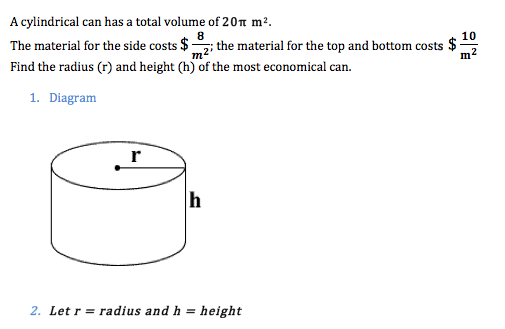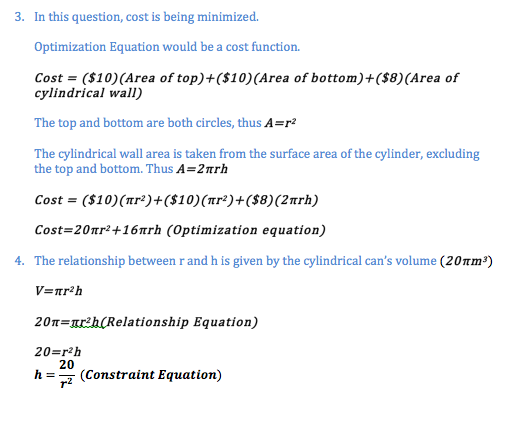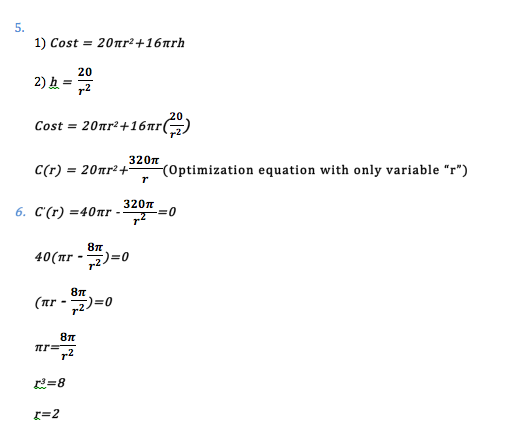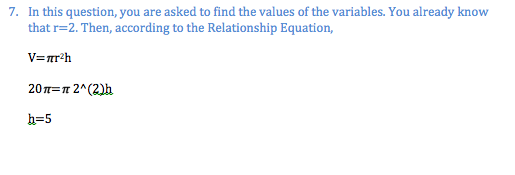Documentation:Math 104 Student Guide/Optimization
Overview of Optimization
Optimizations problems in calculus allow us to determine a correct variable or set of variable in order to reach a specific target, either a minimum or maximum point. These problems can range from determining maximum area with a given perimeter length, or even a minimum surface area in order to produce a fixed amount of volume.
Distinct Differences from Related Rates
As you have already learned, related rates problems allow us to determine the change in one variable as a certain set of requirements are changing. In contrast, within optimization problems, the variables are fixed. In an optimization problem we do not need to determine the rate at which variables are changing, but instead, we must determine the maximum or minimum amount we can produce with a set of fixed variables. A general distinction of optimization problems is:
- When taking the derivative, (i.e. d(something)/ dt) it results in 0, due to the variable being constant.
- The answer to an optimization problem will produce a static value, not a rate.
Approaches to Optimization Questions
1. If appropriate, always start off by drawing a sketch or diagram. This helps you visualize and organize your thoughts.
2. Define variables and label them in our diagram. These variables will lead to you to create mathematical equations later on.
3. Find out what is being maximized/minimized (Optimization Equation)
4. Find the relationship between the variables (Relationship Equation). Most optimization questions begin with two equations. Isolate one variable as the constraint equation.
5. Substitute the isolated variable into the optimization equation. After substitution, your optimization equation is left with one variable only.
6. Differentiate the optimization equation and set it to equal to 0. Solving for your variable will give you the x value(s) in which your maximum and minimum values occur.
7. Depending on the question given, you can be asked to find the maximum value, minimum value or the variables’ value.
In order to get the maximum and minimum values, substitute the x value(s) into your original function.
You have already solved for one variable. Find the other variable’s value using their relationship equation.
8. You may verify your result by using the first/second derivative test.
Sample Question



